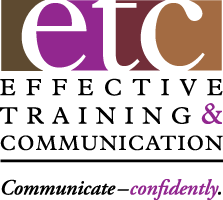As workplace presenters, you have two basic strategies for handling audience questions – holding them until the end or handling them anytime. Both approaches work, but each has some disadvantages.
There also are two hybrid strategies that involve the best features of both approaches. So, here’s how you can easily survive Q&A and even enjoy the process.
1. Questions Before the Summary
Because the audience remembers most what they hear last, here’s how to deal with the disadvantages of holding questions until the end while still maintaining audience control and time management:
- Indicate in your introduction that there’ll be plenty of time for their questions at the end of your presentation.
- After you wrap up your last Sub-Point, pause and indicate that it’s time for questions.
- Answer them as needed, indicating when there’s time for one or two more. You timed your Summary, so you know how much time to allow and still end on time.
- Pause briefly, then segue into your Summary with a brief transitional phrase.
- In so doing, you still end with your well planned and practiced summary, not the often clumsy answer to the last question someone asked.
2. Questions After Each Section
You can also accomplish similar results by inviting questions after each of your three or four Sub-Points. Simply indicate in your Introduction that you’ll invite questions throughout the presentation. This strategy is especially effective with a team-delivered message. Each presenter invites questions at the end of his or her part and then transitions to the next speaker.
This approach is more audience-centric because they don’t have to wait until the end of the entire presentation to ask questions about Sub-Point A or B. It also requires effective time management and audience control. And you still end the entire presentation with your powerful Summary.
Worth Trying
While neither of these ‘Best-in-Class’ hybrid strategies will eliminate audience members from interrupting, asking a question whenever they want to or behaving badly, both are effective tools well worth adding to your Presenter Tool Kit to help you survive Q&A.
